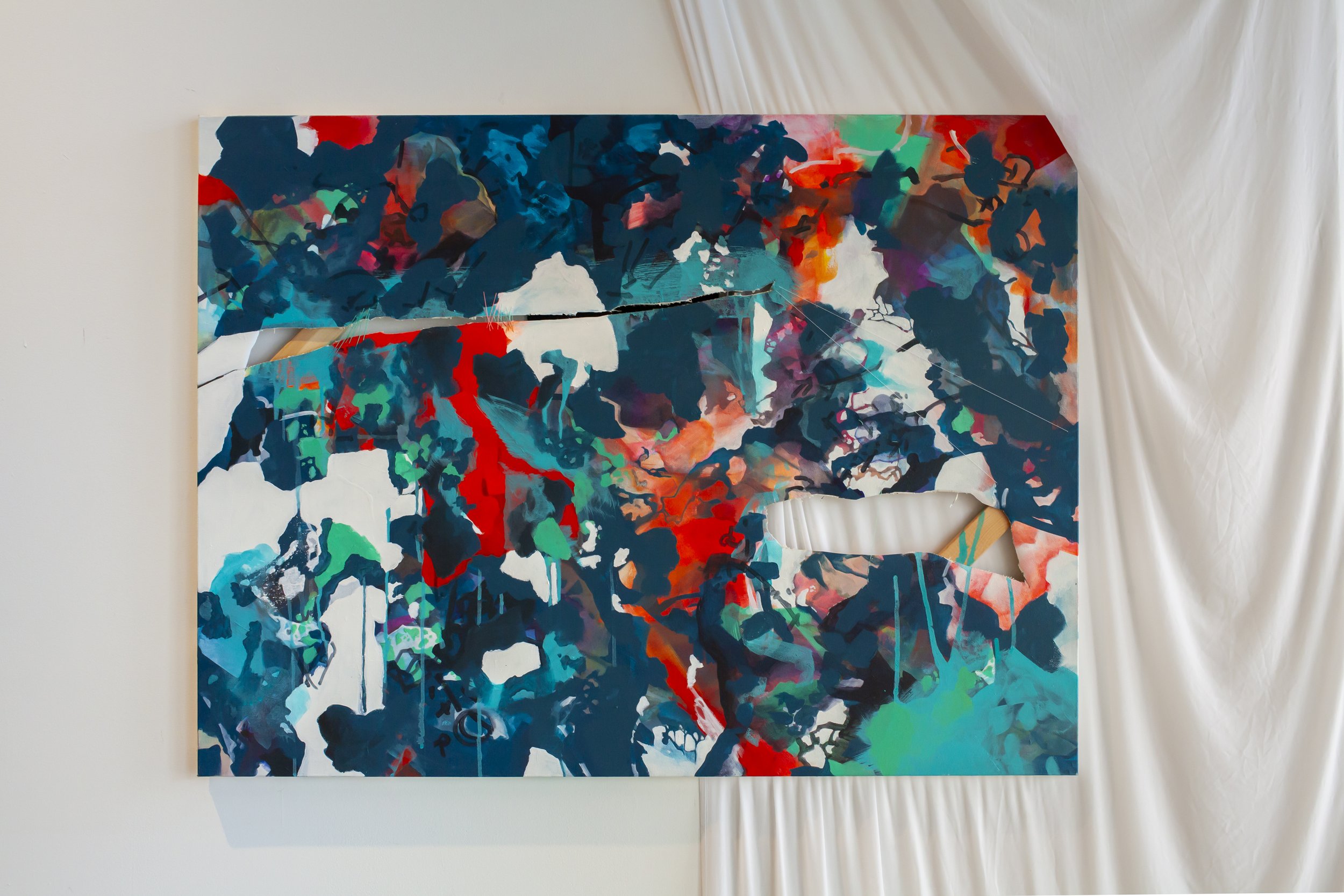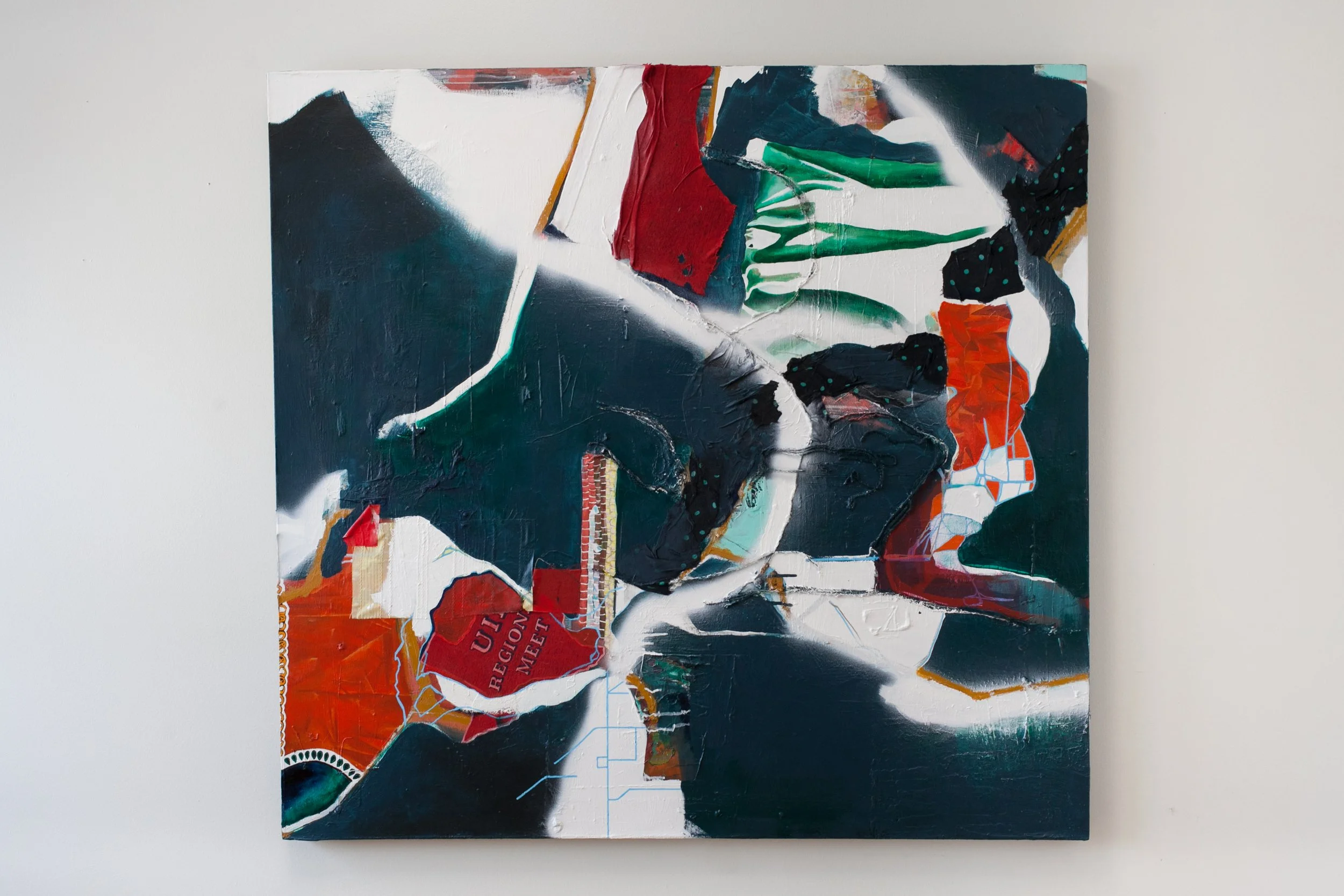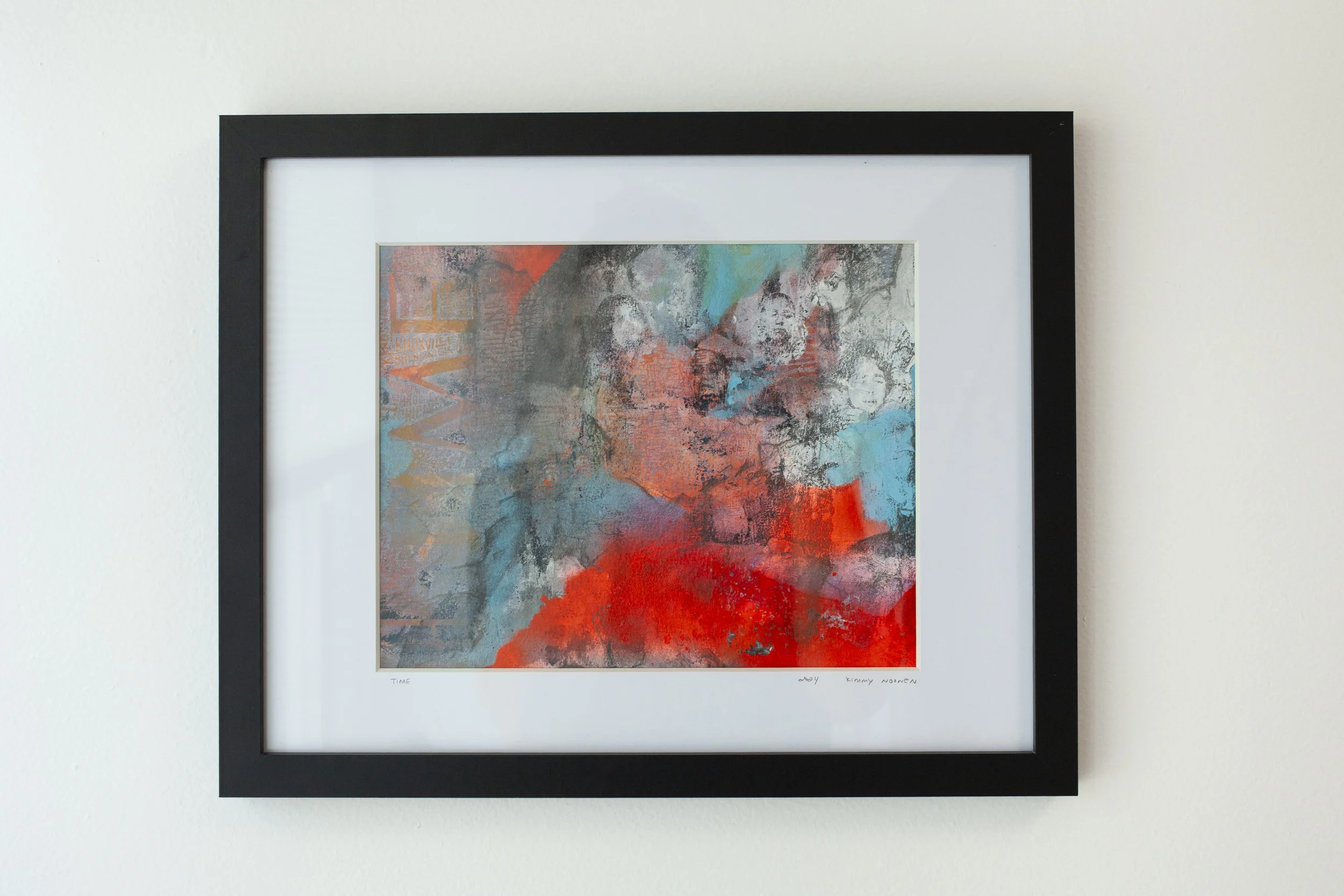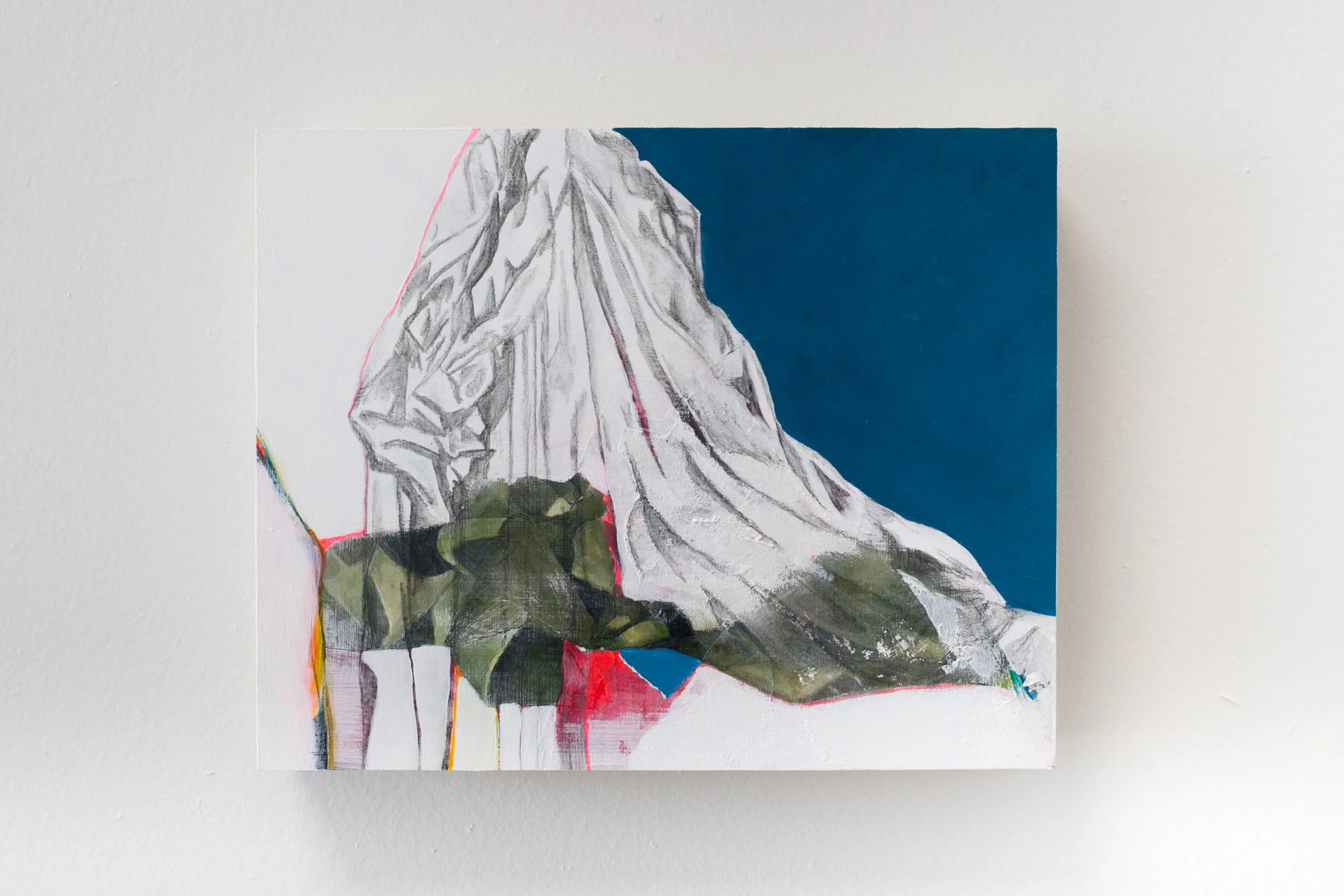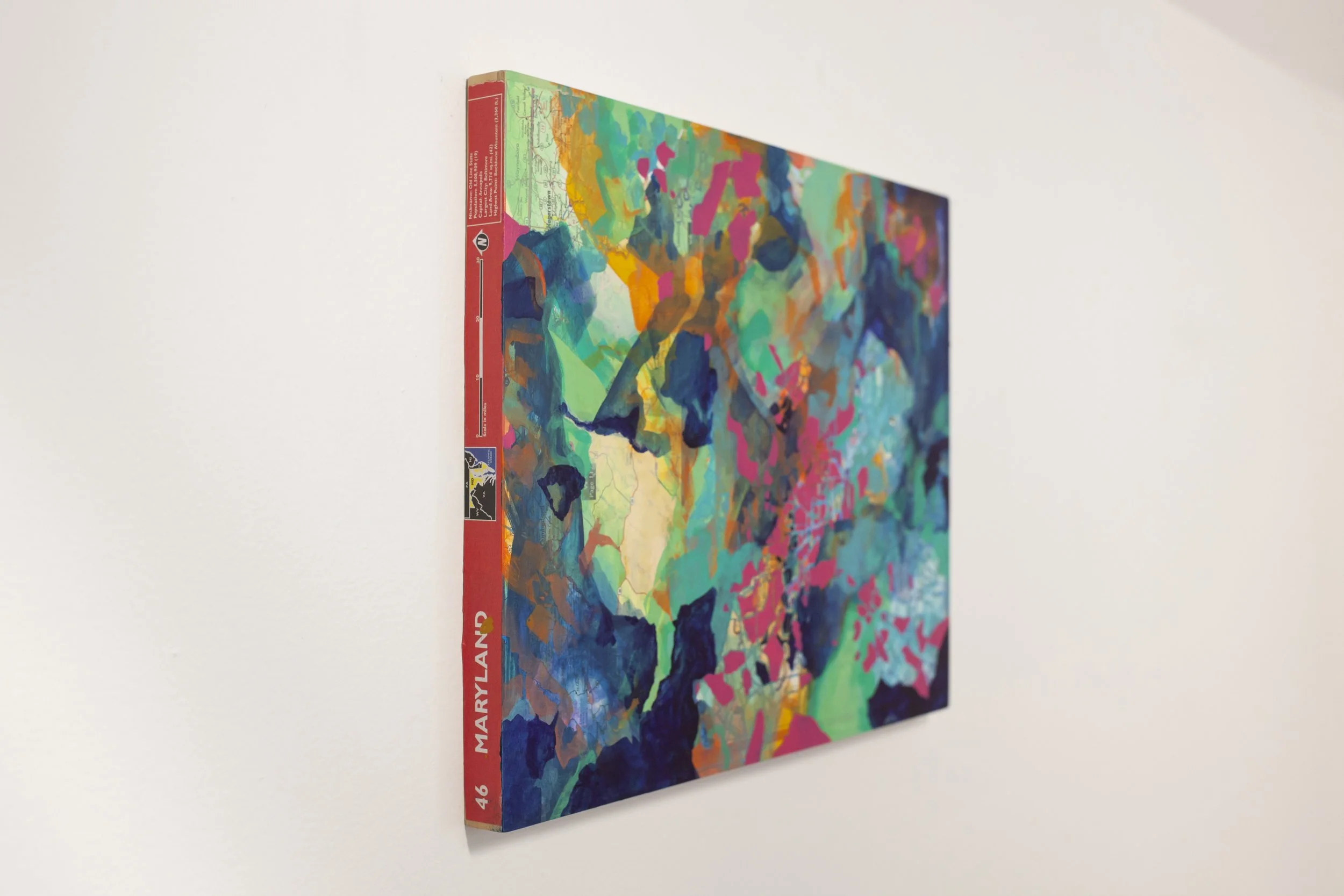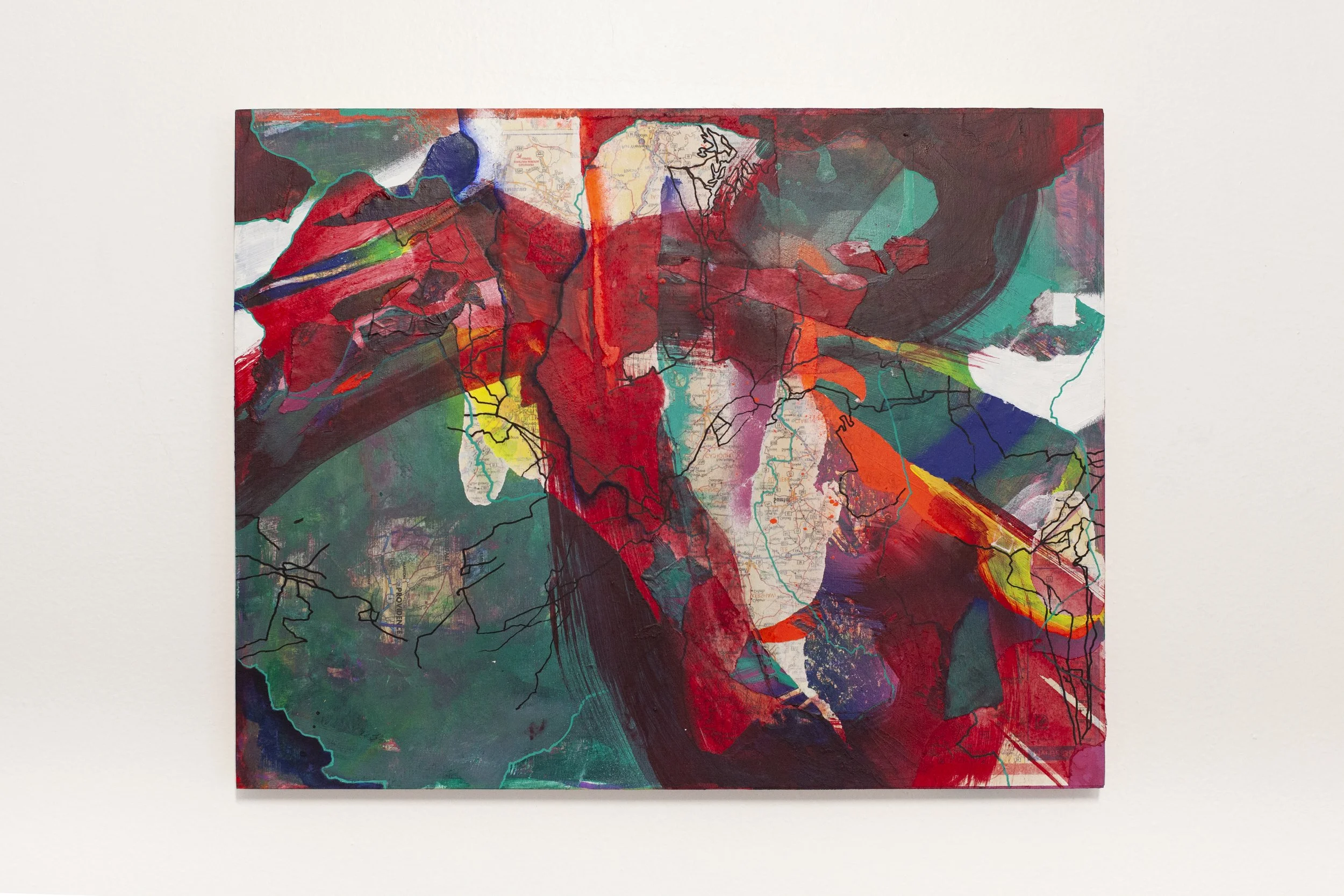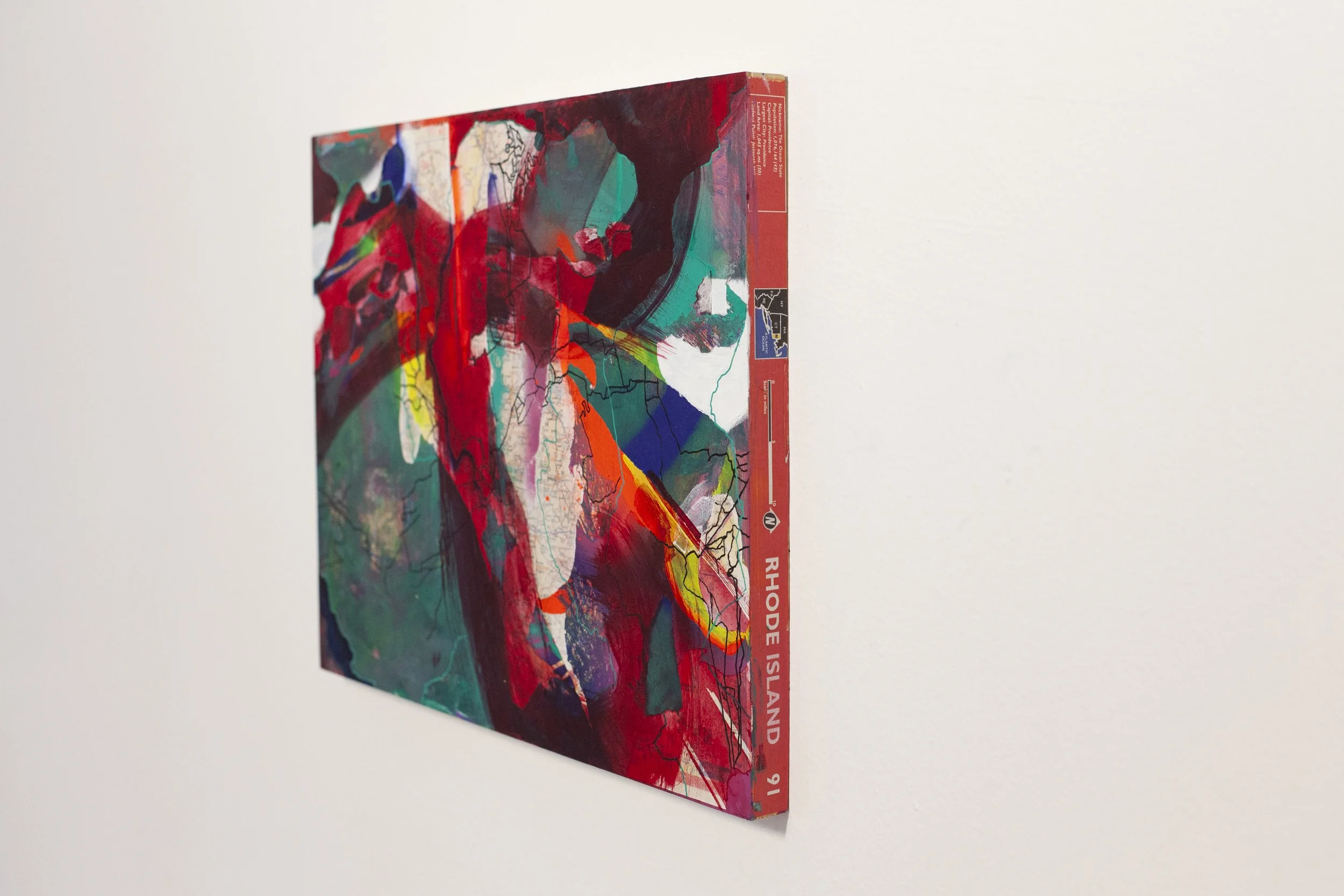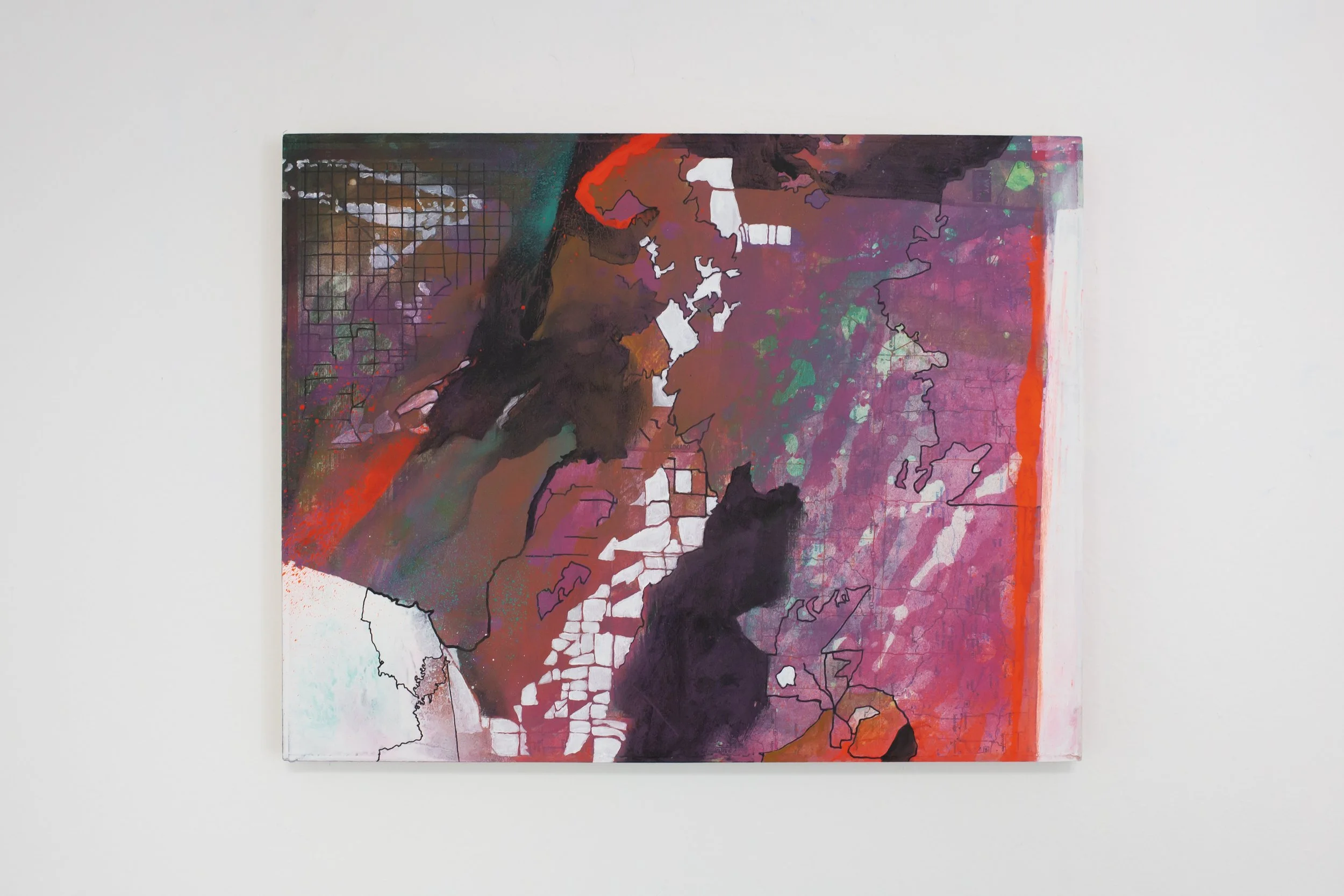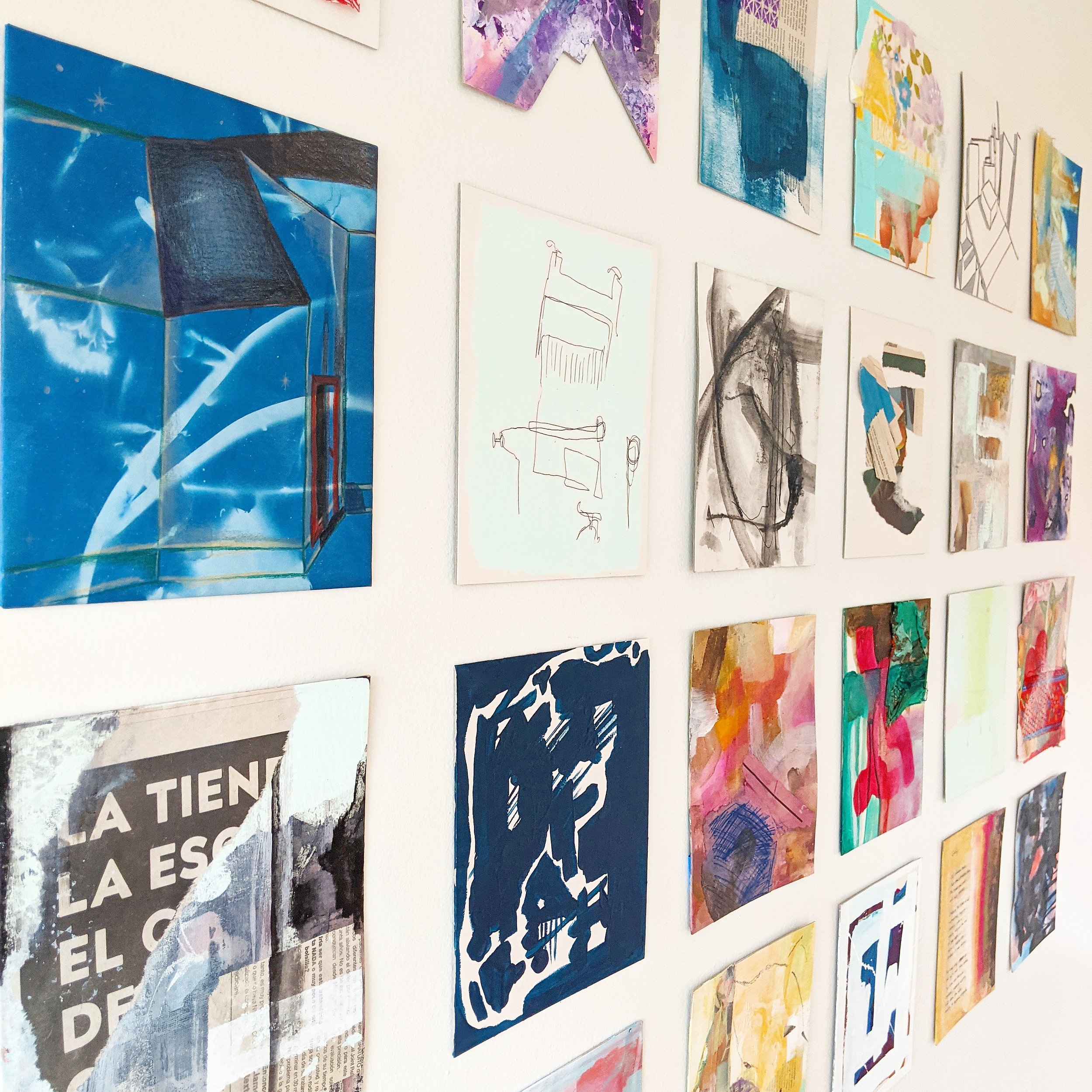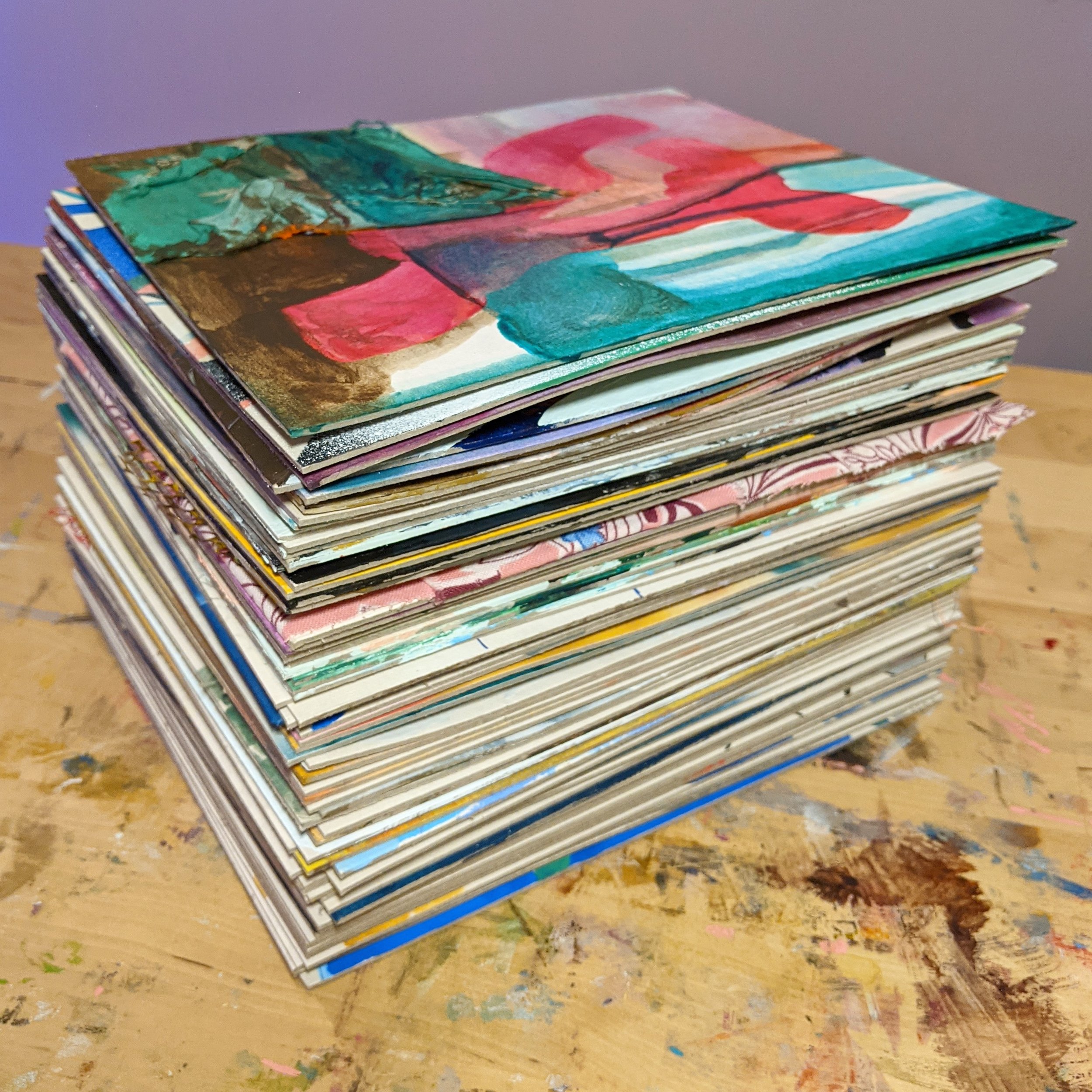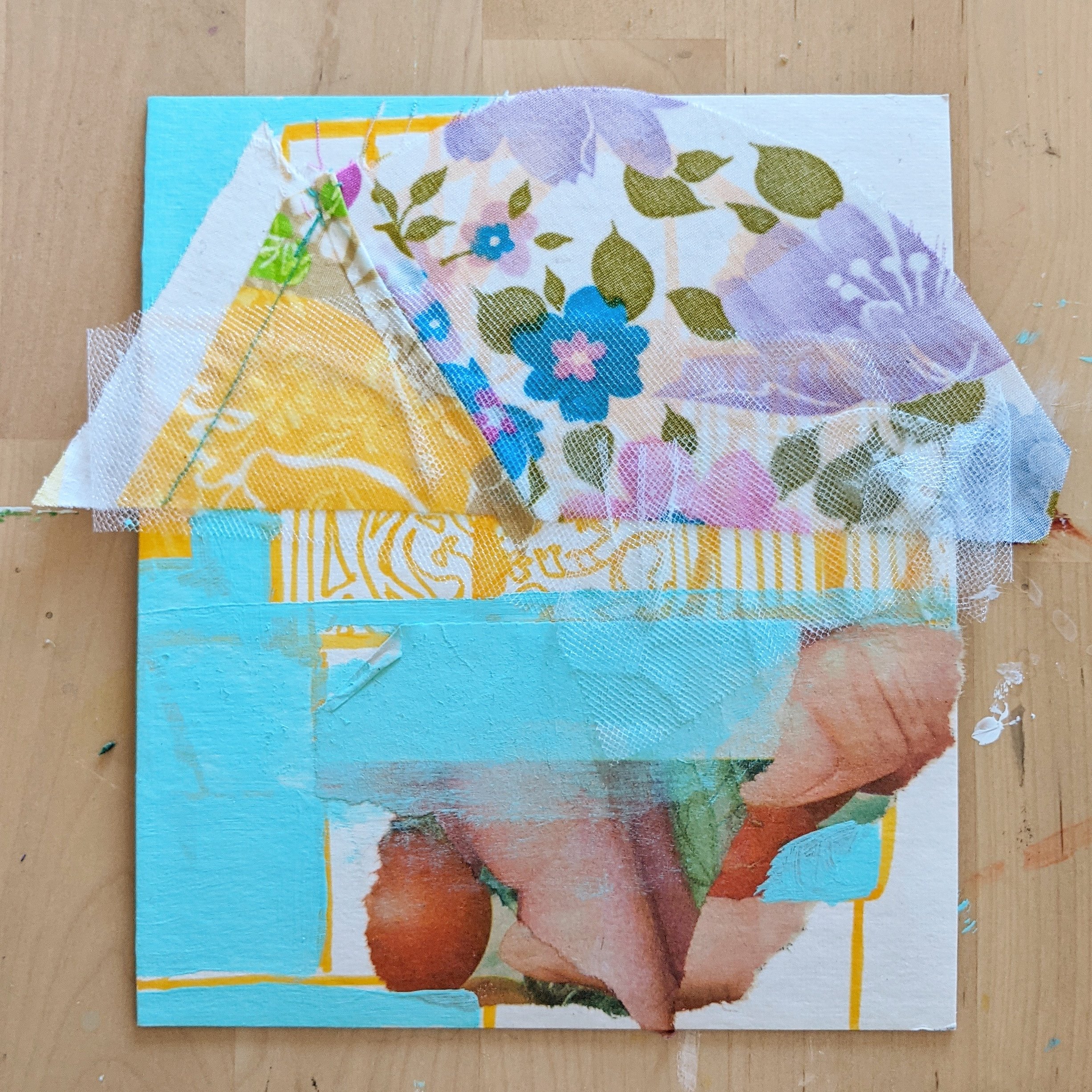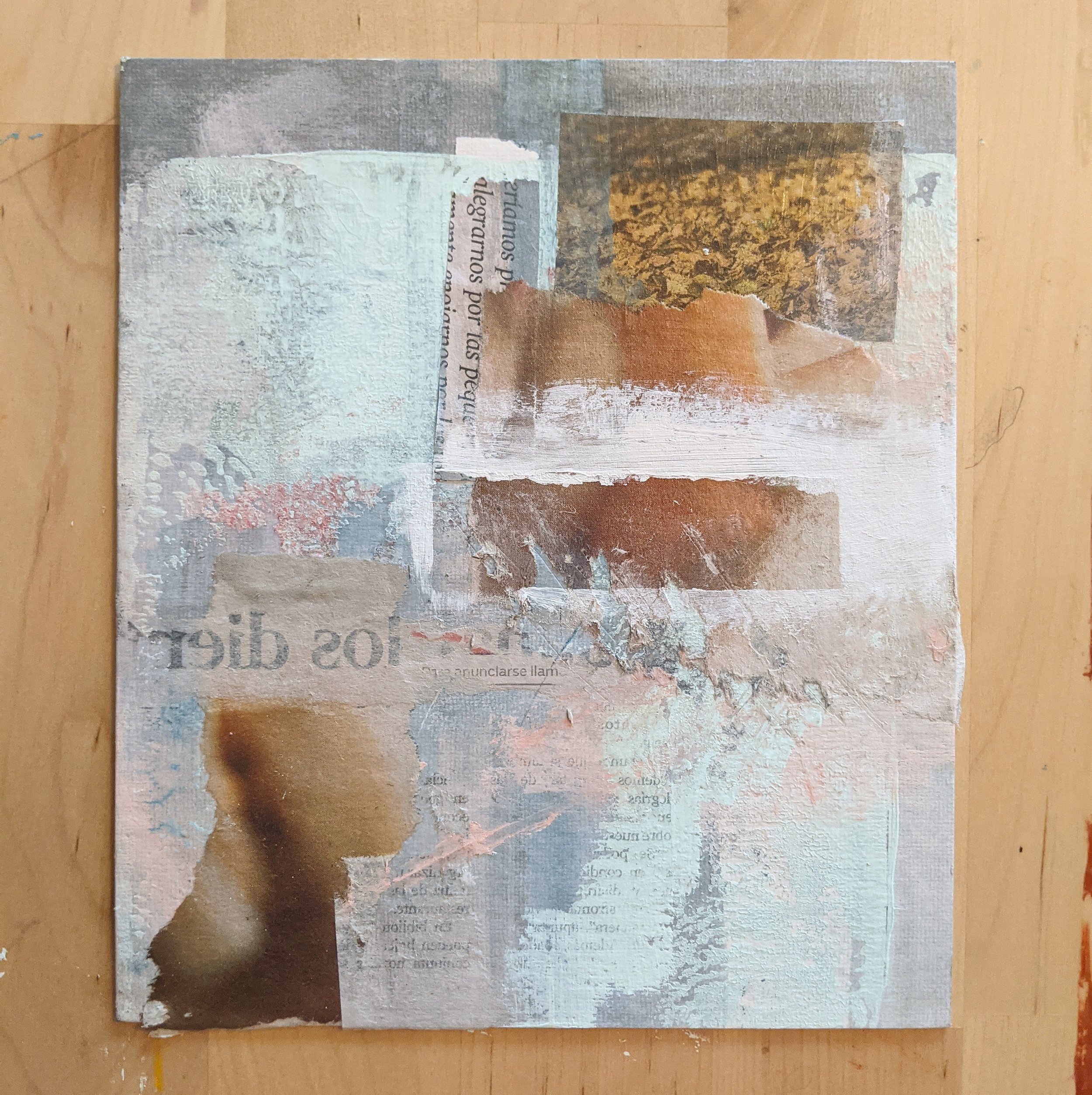Selected Paintings
Purchase price for paintings are listed in the description for each piece. Anything marked NFS or without a price is not for sale. To inquire about adding an original piece to your collection, please email the artist through the Contact menu page. Additional shipping fees may apply. To purchase giftable artwork, please visit the Shop.
The Atlas Series
The Atlas series is an ongoing collection of paintings built upon individual pages from a 2005 road atlas, carefully removed from their binding and adhered to wood panels with the state's name and stats still visible along the edge. By engaging with the dense cartographical information in a visual way, I partner paint with the existing patterns embedded within the maps to create fantastical, fictitious environments. In a world saturated with certainty of destination, dismantling the map’s original function of making a place knowable and conquerable, the work seeks to return wonder to wandering, challenging the myth that wanting to journey gives us the capacity to own what we find when we get there.
#arteveryday
2020
As a full time mother of two children, through a pandemic, and into the purchase of our first home, I found myself identifying as “a person that used to paint.” As I began to unpack old dusty art supplies into the marvelous studio space in our new home, I discovered hundreds of 6.5 x 7.5” paper boards. As a gateway back into an activity I still loved, I began to create quick daily pieces on these boards. My rustiness began to chip away as I literally practiced my way back to confidence.
Older Works

Cold & Homesick / 2005 / 40x60" / acrylic, found objects, spray paint on canvas / NFS
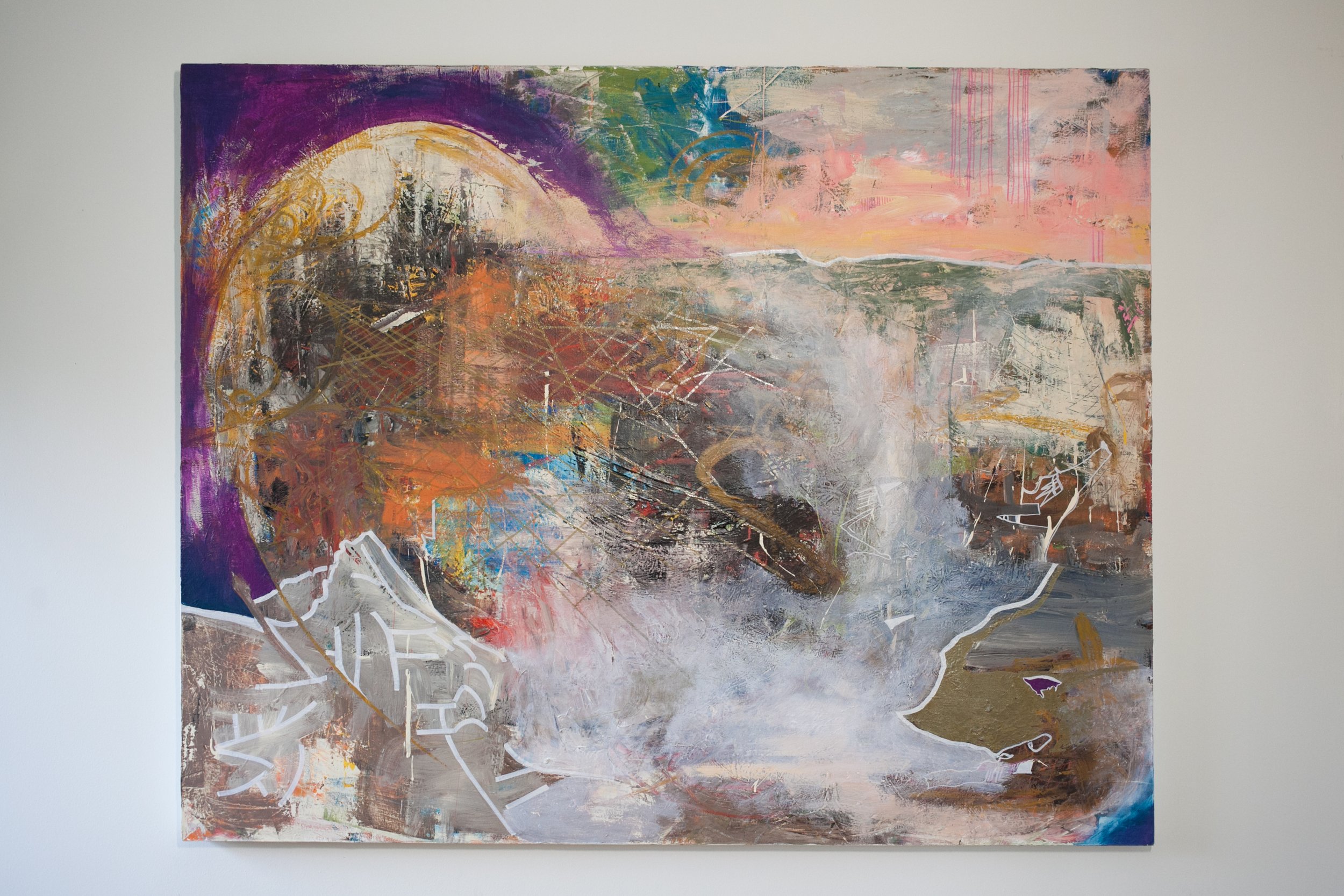
Forgotten Title (Chicago) 60 x 48" / 2004-2020 / oil on canvas / NFS

Kentucky Tennessee / 2006 / 30x25" / AAA road map, acrylic, ink / NFS

Observation Mapping / 2009 / 11x14" / paper, ink / NFS
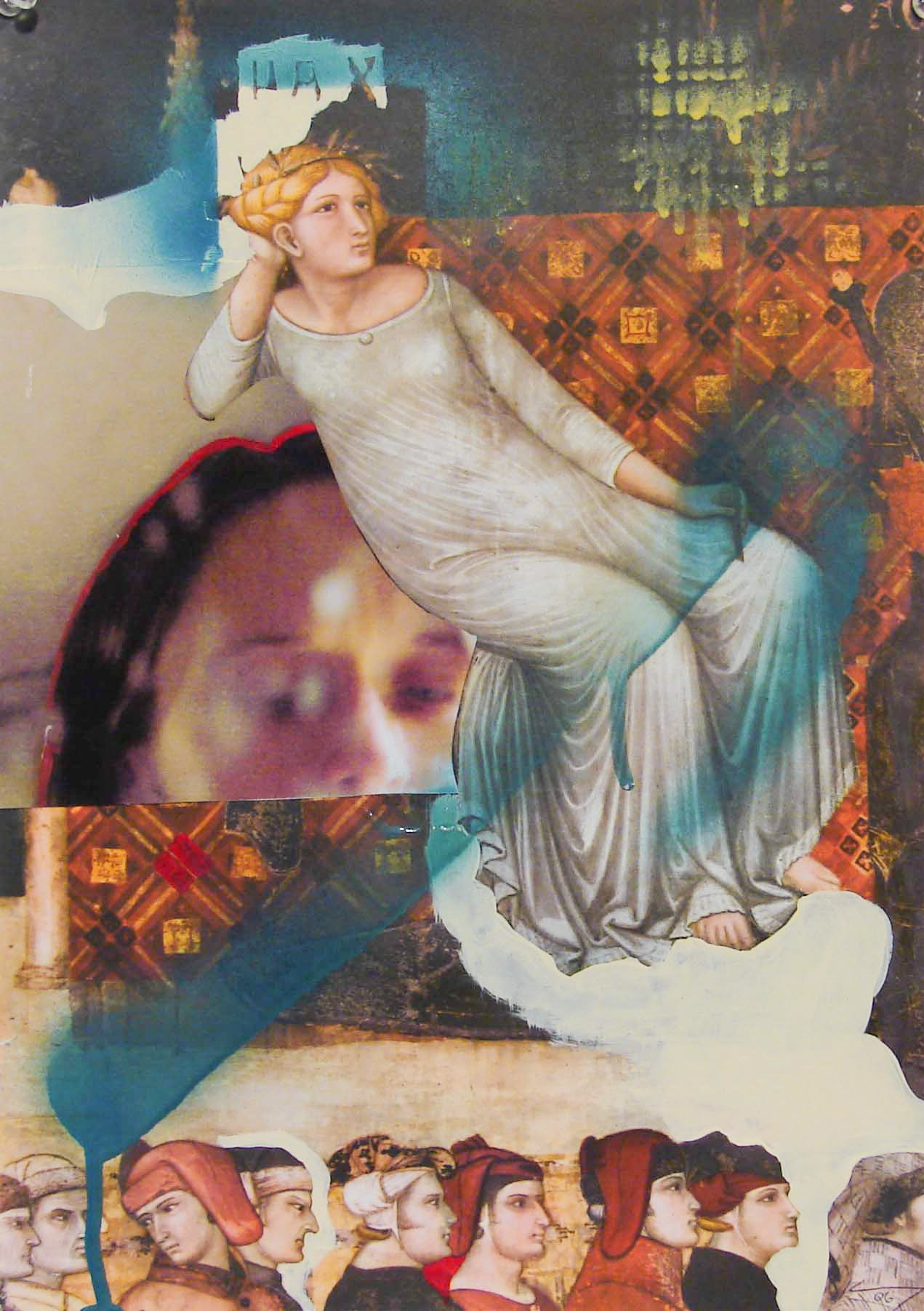
Early Christian Series / 2006 / 12x16" / book illustration, photo print, spray paint, acrylic / NFS

Early Christian Series / 2006 / 12x13" / book illustration print, acrylic / NFS

Untitled / 2006 / 30x50" / acrylic, wood stain, yarn, photo prints, spray paint / NFS

Untitled / 2006 / 3x6"/ found photographs, newspaper, thread, ink, found objects / NFS
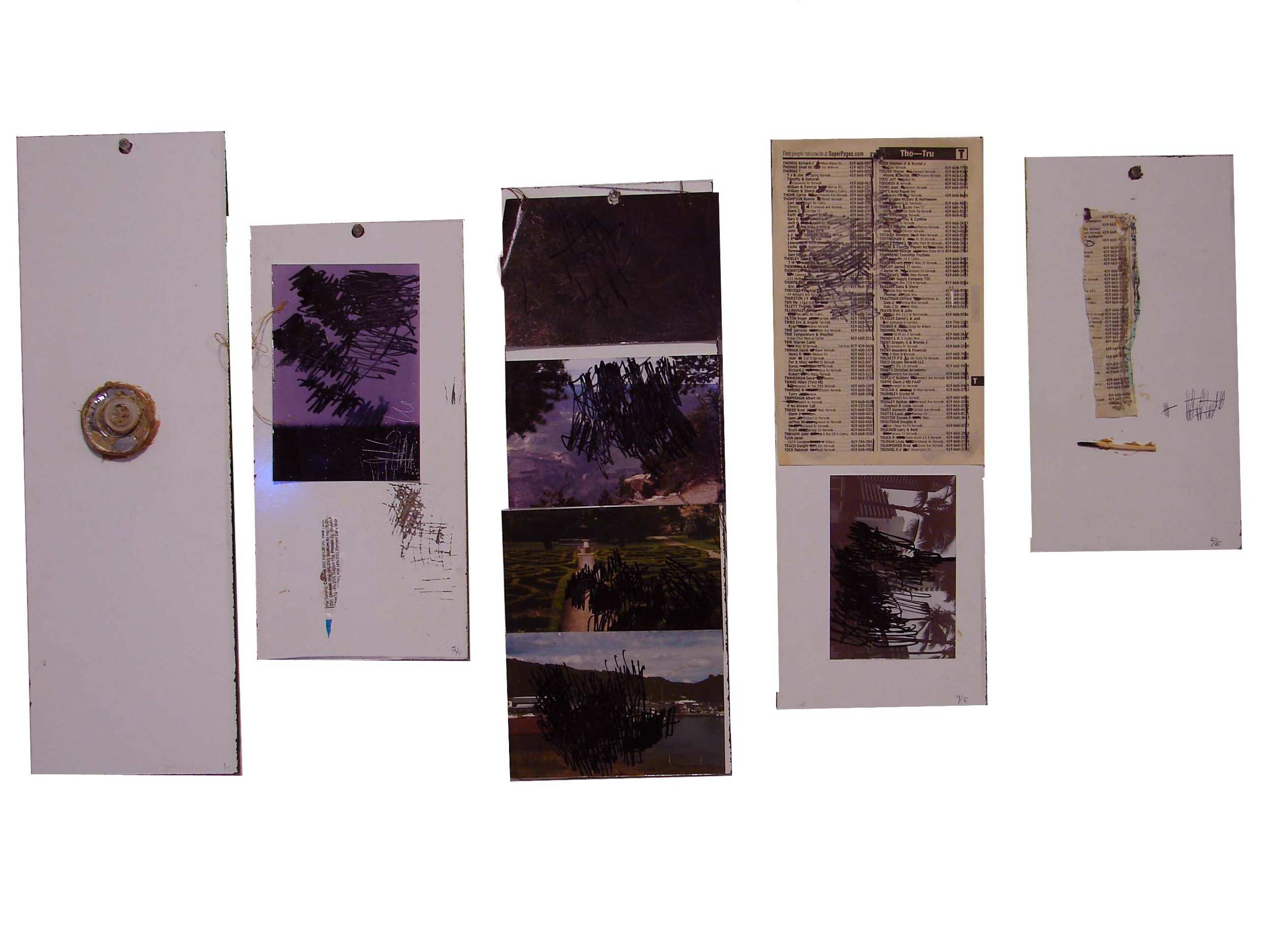
untitled Planks / 2005 / variable dimensions / wood, photos, found materials / NFS

Alum Plank / 2005 / variable dimensions / wood, photos, found materials / NFS
On Painting
At 21 years old, I was an art major preparing my undergraduate thesis of large canvases covered in sharp marks, bright colors, and any object that could create terrain on a flat surface. I loved the unexpected way painting could bring out emotions I didn’t otherwise have access to as a young adult. The physicality of making art felt familiar to my upbringing in a largely working-class rural family where strength and rigor were most highly rewarded. But I had no idea how to build a conceptual body of work that still felt relevant to the parts of my life that didn’t speak in the language of abstraction.
I graduated with a bachelor’s degree, a studio full of finished canvases, and a severe crisis of conscience. As much as I loved painting for my inner life, the work felt unqualified to affect change on the tangles I saw in my family, community, and the larger world. In the face of that identity crisis, I believed if I was to stay an artist, I would need to forge another path.
As a newlywed, I moved with my husband to Chicago and began grad school. A fresh start that felt surreal and often overwhelming, I packed away the painter in me. Instead, I focused on gestures that lived in the more accessible and seemingly concrete realm of time.
Then, I became a mother.
The worst and best thing about my two children is that they have utterly destroyed my world. Motherhood forced me to see myself with a miserable, unmistakable clarity. My desperate need to stay productive clashed with my inability to do anything except cater to these small people depending on me for life. Until that moment, all I wanted was to lend a small hand in making the big world a better place. Motherhood showed me instead that I had boundless influence over the tiniest of worlds.
As they grew, my daughters became our household painters and I became their exhausted artist’s assistant. They reminded me of the wonder in putting marks on surfaces and the uselessness of living in any heart-space except the authentic present. They led me back to a part of myself that was sorely neglected.
One unexpectedly significant day in 2018, I made a choice to try again. I dug out some oil markers, pulled our living room couch away from the wall and started to draw back into one of my old paintings that had hung there decoratively for years. It felt awkward, exciting, and familiar. I was most surprised to discover that I saw the work of my hands as Good. In all those years away, I had been refining my inner work and could finally see how much that journey mattered.
In those early years as an undergrad, I was unwittingly trying to build a bridge between what I saw as a working-class past and an academic future. At the time I had no perspective or language to understand the intensity of that struggle or the value inside it. It never occurred to me that I would take up permanent residence on that bridge. It’s possible I was born on that bridge. I have found myself standing over a multitude of chasms in my life, between worlds that don’t know how to know each other, teetering on a hope that if we can see the unseen things between us, we can build a path strong enough to carry us to each other.
Today, my work still looks bright, sharp, and layered because my hands have not changed. But the work is also playful, nuanced, and delicate because I have become those things over time. By displaying visual complexity, I invite myself and my viewers to reconnect with the slow unfolding of time, wisdom, and experience present in themselves and the people around them. By integrating inherited fabric from my grandmother’s collection, I am exploring the cultural limitations placed on women and mothers, the burdens we have carried for our society, and the currency of our social-emotional leadership.
The start of my painting practice was built on a desperate individualized need for excellence. I was disillusioned and broken by what I saw as the job of an artist: to tirelessly work alone in a studio until we made art powerful enough to change the world. My art will not change the world. But there are small worlds that can be calmed, encouraged, integrated, or challenged through the things I make. I choose to be teachable and live gently. I will unfold my heart, thoughts, and curiosities onto a canvas until it is satisfied. Then I will share what I’ve made and pray for bridges to emerge.




